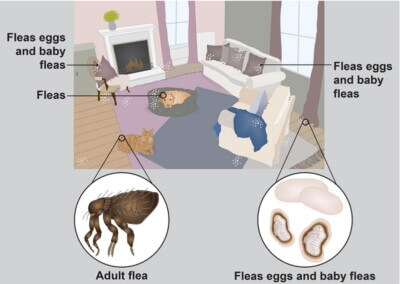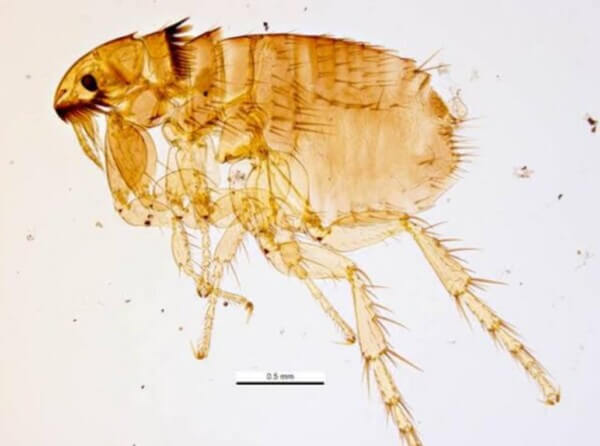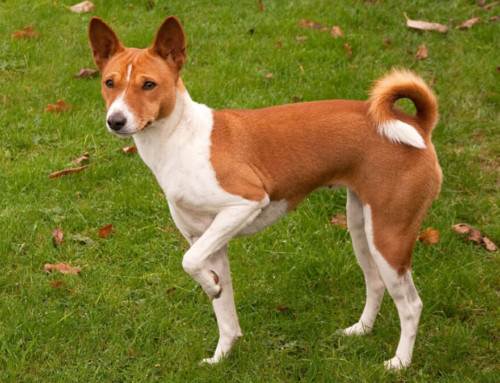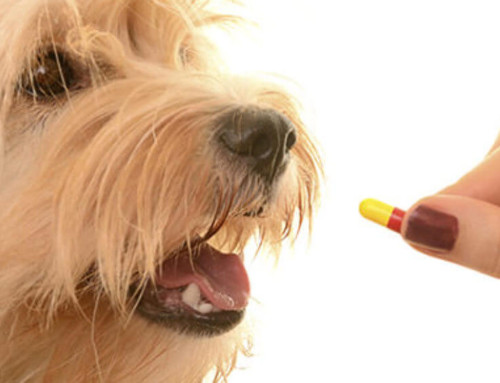Introduction
l take you to vet clinic once in a year so it is necessary to know about fleas and how can you prevent your dog to suffer from it.
What is flea ?
Size of flea about 1 – 2 mm and dark brown in color.
Female adult flea lay eggs in thousands of number and are white, oval in shape and size is about 0.5 mm.
Flea does not have wings so they can’t fly but they can jump with their long and strong hind limbs.
Dog flea : ctenocephalic canis
Cat flea : ctenocephalic felis
Size of flea about 1 – 2 mm and dark brown in color.
Fleas can potentially transmitt disease and are the most common cause of skin problems.
Fleas feed on blood of dog by biting on skin so this bite makes dog itchy . In some cases saliva of flea is allergic to dog leads to developing allergy known as FLEA ALLERGIC DERMATITIS.
Fleas are also the intermediate host for the tapeworm Dipylidium caninum. Pets may ingest tapeworm‐infected fleas during self grooming.
Flea is also vector for some zoonotic disease like typhus, Bartonellosis and plague.
Season of fleas:
- Fleas infestation can be seen throughout the year but mostly seen in warmer month ( march to december) when high humidity and warm temperature are favourable for fleas.
Fact about fleas :
the adult are revanous blood-feeders, consuming up to 15 times their body weight in blood per day.
- Pets initially become infested when adult fleas occurring indoors or outdoors jump on the animal.
- With the ability to jump vertically up to about 6 inches, the adults can easily hitch a ride onto a passing dog or cat, or even the shoes and pant legs of a human.
- Pets acquire fleas from kennels, groomers, etc., or from stray dogs, cats or wandering through the yard. Contrary to popular belief, fleas seldom jump directly from one pet to another.
- Adult fleas spend most of their time on the dog or cat, not in the carpet. This is why treatment of the pet is an essential step in ridding a home of fleas.

- Within minutes of jumping onboard, fleas begin to feed. Digested blood expelled as feces appears as dark, pepper-like specs in the pet’s fur.
- Mating and subsequent egg laying occurs within 24 hours. All of the eggs (40-50 per day) are laid in the fur. However, the eggs soon fall off into carpeting, beneath the cushions of furniture, and wherever else the pet rests, sleeps, or spends time. When treating premises, thorough attention to these areas is crucial.
- After hatching, the eggs develop into tiny, worm-like larvae that remain hidden beneath carpet fibers, furniture cushions, and other protected areas.
- The larvae feed mainly on the feces (dried blood) expelled by the adults which accumulates, along with the eggs, in areas where pets tend to rest or spend time.
- Before becoming adult fleas, larvae transform into pupae within a silk-like cocoon surrounded by bits of debris.
- Pupae remain inside the cocoon for 1 to 4 weeks. However, it might take longer for them to emerge if conditions become unfavorable, for example when a flea-infested home becomes vacant. The cocoon is also impervious to insecticides—another reason some fleas may persist for an extended period, even after the pet and home are treated.
How can you spot flea ?
- For early understanding your dog is going to something wrong you have to groom it daily and play with him so you can at least alert you to the symptom sooner so you can seek treatment as early as possible.
- The most obvious sign that your dog has flea is persistence scratching and something over grooming due to bite of fleas make dog itchy which can result in losses of hair in patches so you can see bald patches on skin.
- If your dog develop a flea allergy the may also have redness , scab and sore area on skin.
- Dog flea is dark brown colour 1-2 mm you may spot on dogs skin or on the carpet , dogs bedding or you may notice small black dirt on dog skin or fur during a combing.
- The good way to test is put that dirt on damp or wet tissue paper if it’s flea dirt it will turn into red because of digested blood they contain.
Treatment and prevention
Topical application:
Spot on preparation
Anti flea spay
Anti flea shampoo
Flea collar
Anti flea Powder
Oral medication
- Anti flea pills are given to your dog by mouth to kill fleas for that you have to consult veterinary for proper drug and dose for sufficient duration .
Treatment of premises:
- Use a powerful vacuum on any floors, upholstery, and mattresses. Cracks and other tight spaces are usually good hiding places for fleas and their cohort of eggs, larvae, and cocoons. If you can, use a vacuum with a bag you can dispose of without coming into contact with its contents.
- Employ a steam cleaner for carpets and upholstery, including pet beds. The combination of high heat and soap is the enemy of fleas in all stages of life.
- Wash all bedding, including your pet’s, in hot water. Dry it at the highest heat setting. If the infestation is severe, consider getting rid of old bedding and starting a new.
- Use chemical treatments. Aerosol sprays are recommended over the foggers, as you can direct the spray under beds or other places that the foggers may be unable to reach.




















